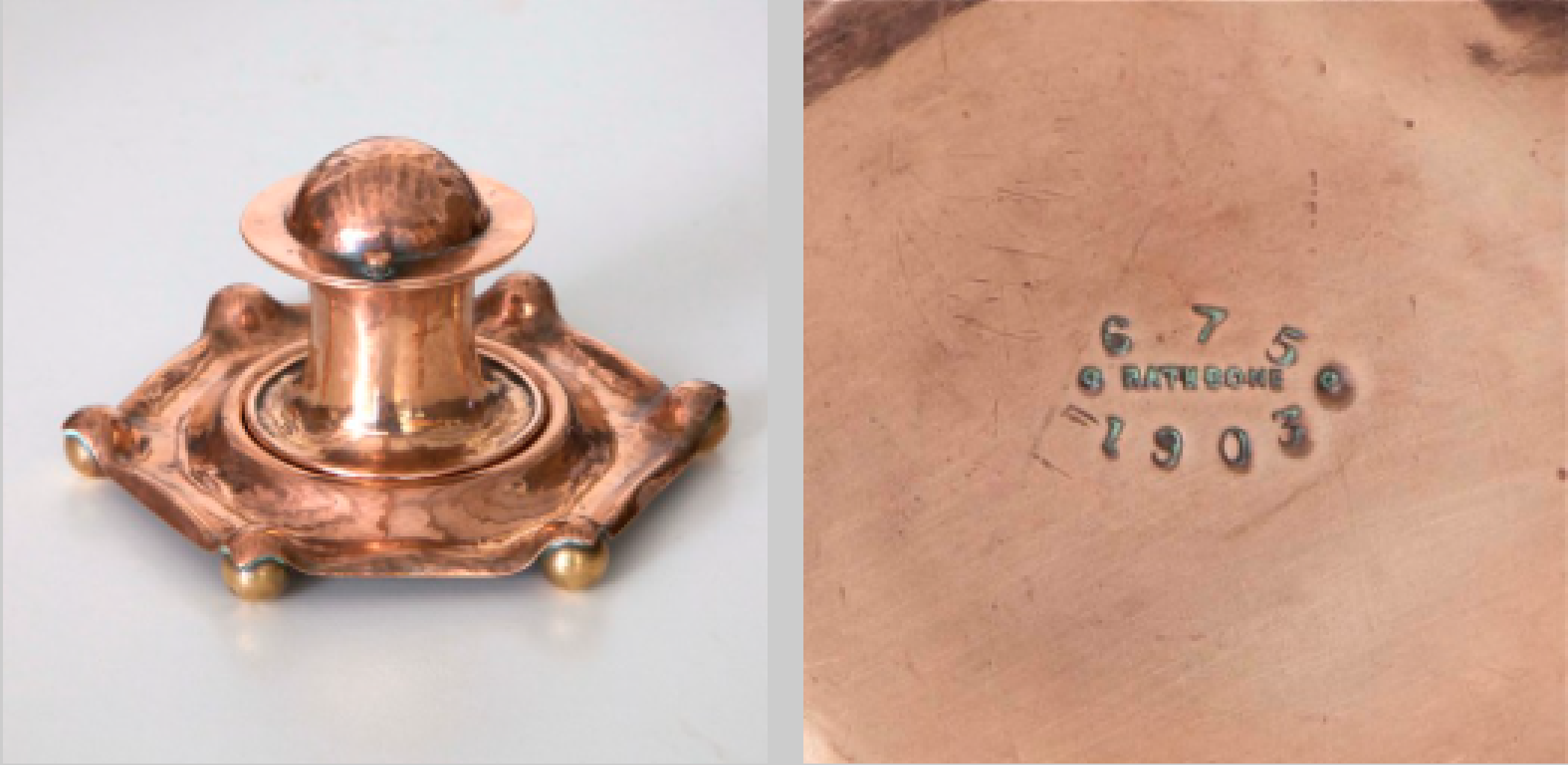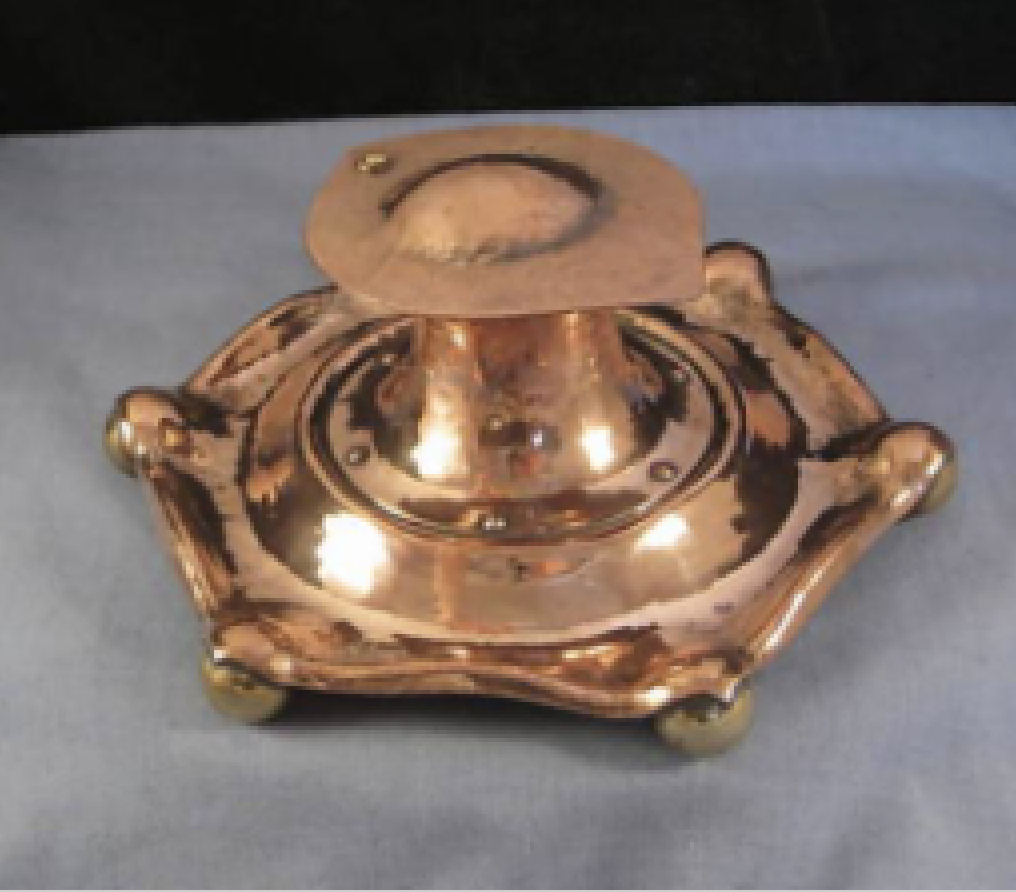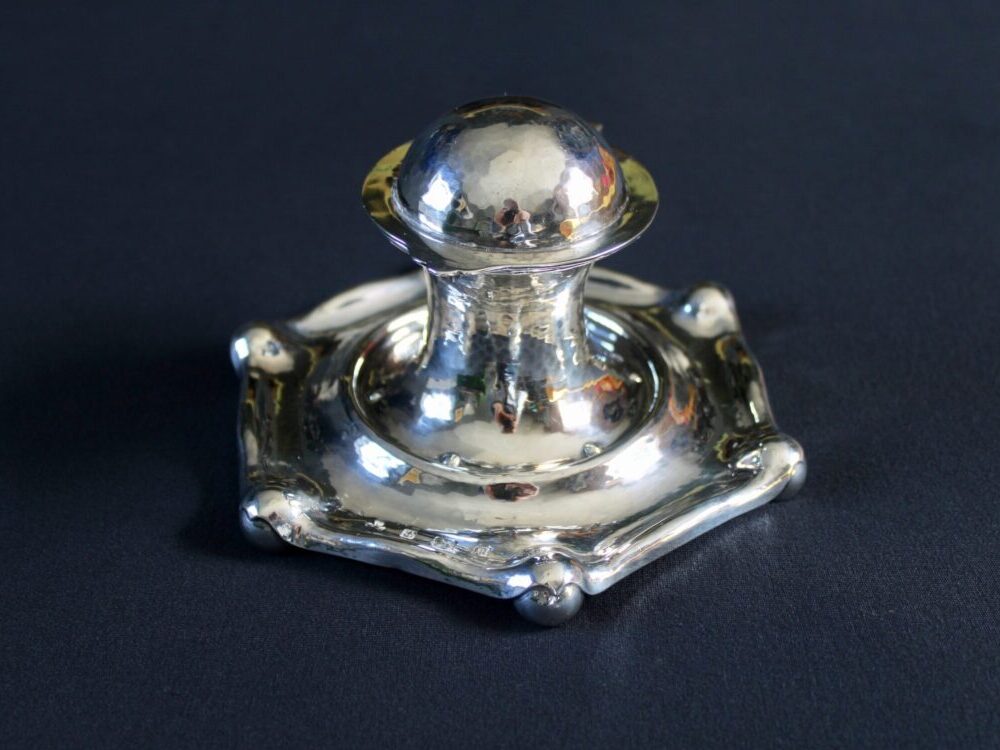The continued use of Richard Llewellyn Rathbone designs
Richard Llewellyn Rathbone was a talented designer and metalworker from an important Liverpool family. He was related to other well known figures in the Arts and Crafts Movement such as W.A.S. Benson and Harold Rathbone (Del Robbia Pottery) and is known to have made up designs for the likes of C.F.A Voysey. He started his own workshops in Liverpool around 1890 and went to have workshops in Wales and London. In the early days he specialised in metalwork, typically copper or brass, all hand made with typical Arts and Crafts details like hand planishing and riveted construction.
Around 1902 Rathbone decided to sell many of his designs to Faulkner Bronze and Company. It’s all a little confusing as he continues to make many of these designs himself for a few more years at least. The designs he sold were primarily for door furniture and lighting but I believe it also included inkwells.
Many years ago I wrote a short article on my website, A E Jones boxes, about an inkwell design that had started with Rathbone and ended with A E Jones Ltd. I am going to take that one small step further this time and show the progression of a design from Rathbone to George Lawrence Connell Ltd. The story starts with the original inkwell by Richard Llewellyn Rathbone made in 1903 (Design No. 675). In copper with brass ball feet with and a hand hammered finish.

Rathbone copper and brass inkwell, 1903 (Image used courtesy of www.centuryofdesign.com).
As we already know, Rathbone had sold many of his designs to the Faulkner Bronze Co in 1902. The Faulkner Bronze Company is reconstituted as the firm of Jesson, Birkett & Co on the retirement of Faulkner in 1904. At some point after 1904 the firm of Jesson, Birkett & Co begins to make a number of Rathbone’s inkwell designs or slight variations thereof.

Copper inkwell to a design by Richard Llewellyn Rathbone with the makers mark for Jesson, Birkett & Co.
To confuse things even more, the Birmingham based firm of Jesson, Birkett & Co allowed the firm of silversmith Albert Edward Jones to use a number of designs between 1905 and 1910 when the firm of Jesson, Birkett & Co ended. Thomas Birkett likely knew Albert Edward Jones from their early days together at the Birmingham Guild of Handicraft. Both firms were highly commercial ventures and the sharing of designs must have been mutually beneficial. Even after 1910, A E Jones Ltd continued to produce a number of designs that had come via Jesson, Birkett & Co.
This included a version of the Rathbone designed inkwell. A link to a solid silver version of the inkwell can be found below. Made in 1911 and hallmarked for A E Jones Ltd. This particular example was being sold by the late Jan Vandenbosch.
http://www.vandenbosch.co.uk/Jewellery/Silver/silverHTM/Page2/s24.htm
So finally we come George Lawrence Connell. A silversmith is his own right, he also owned the firm of G.L. Connell Ltd which was also known as “Connell’s of Cheapside” based in London. Around 1910 the firm was direct competitor of Liberty & Co and sold the designs of many firms including A E Jones Ltd and William Hutton and Sons and even bought some of Liberty’s designs by Archibald Knox and others.
The inkwell below is nearly identical to the design by A E Jones Ltd. It is also made in 1911 but has the makers mark for G. L. Connell. It’s well know that A E Jones Ltd allowed other makers to put there own makers marks on piece the firm produced. A E Jones was very commercially driven and I have seen his designs with makers marks for Connells, Payne & Son, D M Davis, W. Bruford & Sons and many others. It’s highly likely that this particular inkwell was made by A E Jones Ltd.
It’s fair to say that they all definitely got good use out of this original design by Rathbone!
